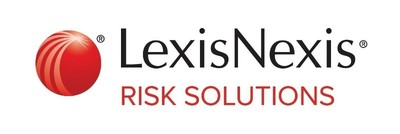Fraud Costs Surge as North America's Ecommerce and Retail Businesses Face Mounting Financial and Operational Challenges
LexisNexis Risk Solutions' fifteenth annual True Cost of Fraud Study reveals escalating fraud challenges in North American ecommerce and retail. US merchants face $4.61 costs per $1 of fraud, while Canadian merchants experience $4.52.
Mobile transactions, including digital wallets and peer-to-peer payments, account for 33% of fraud costs in the US and 41% in Canada. US ecommerce reports 53% of fraud costs from online purchases and 30% from mobile channels. The study, surveying 569 fraud executives, highlights that 63% of businesses experience increased customer churn due to fraud, while 64% report reduced conversion rates.
Notable concerns include that 41% of North American merchants still rely on manual fraud prevention processes. Customer friction remains a critical challenge, with poor user experience driving 36-37% of transaction abandonment in US retail and ecommerce during new account creation.
Il quindicesimo Studio sul Costo Reale della Frode di LexisNexis Risk Solutions rivela un aumento delle sfide legate alla frode nel commercio elettronico e al dettaglio in Nord America. I commercianti statunitensi affrontano costi di $4,61 per ogni $1 di frode, mentre i commercianti canadesi sperimentano costi di $4,52.
Le transazioni mobili, comprese le wallet digitali e i pagamenti peer-to-peer, rappresentano il 33% dei costi di frode negli Stati Uniti e il 41% in Canada. Il commercio elettronico negli Stati Uniti riporta il 53% dei costi di frode derivanti da acquisti online e il 30% da canali mobili. Lo studio, che ha intervistato 569 dirigenti del settore frodi, evidenzia che il 63% delle aziende sperimenta un aumento dell'abbandono dei clienti a causa della frode, mentre il 64% segnala una diminuzione dei tassi di conversione.
Preoccupazioni notevoli includono il fatto che il 41% dei commercianti nordamericani si affida ancora a processi manuali di prevenzione delle frodi. La frizione con i clienti rimane una sfida critica, con una scarsa esperienza utente che provoca il 36-37% degli abbandoni delle transazioni nel commercio al dettaglio e nell'ecommerce statunitensi durante la creazione di nuovi account.
El decimo quinto Estudio sobre el Costo Real del Fraude de LexisNexis Risk Solutions revela un aumento de los desafíos de fraude en el comercio electrónico y minorista de América del Norte. Los comerciantes de EE. UU. enfrentan costos de $4.61 por cada $1 de fraude, mientras que los comerciantes canadienses experimentan costos de $4.52.
Las transacciones móviles, incluidas las billeteras digitales y los pagos entre pares, representan el 33% de los costos por fraude en EE. UU. y el 41% en Canadá. El comercio electrónico en EE. UU. informa que el 53% de los costos por fraude provienen de compras en línea y el 30% de canales móviles. El estudio, que encuestó a 569 ejecutivos de fraude, destaca que el 63% de las empresas experimentan un aumento en la pérdida de clientes debido al fraude, mientras que el 64% informa sobre tasas de conversión reducidas.
Las preocupaciones notables incluyen que el 41% de los comerciantes de América del Norte aún dependen de procesos manuales de prevención de fraudes. La fricción con los clientes sigue siendo un desafío crítico, con una mala experiencia del usuario que impulsa el 36-37% del abandono de transacciones en el comercio minorista y el comercio electrónico de EE. UU. durante la creación de nuevas cuentas.
LexisNexis Risk Solutions의 제15회 사기의 실제 비용 연구는 북미 전자상거래 및 소매에서 증가하는 사기 문제를 드러냅니다. 미국 상인들은 사기당 $1에 대해 $4.61의 비용을 부담하고, 캐나다 상인들은 $4.52의 비용을 경험합니다.
디지털 지갑 및 P2P 결제를 포함한 모바일 거래는 미국에서 사기 비용의 33%, 캐나다에서 41%를 차지합니다. 미국 전자상거래는 온라인 구매에서 53%의 사기 비용을 보고하며, 모바일 채널에서 30%를 차지합니다. 569명의 사기 임원을 조사한 이 연구는 63%의 기업이 사기로 인해 고객 이탈이 증가하고 있다고 강조하며, 64%는 전환율 감소를 보고합니다.
주목할 만한 우려 사항은 41%의 북미 상인이 여전히 수동적인 사기 예방 프로세스에 의존하고 있다는 것입니다. 고객과의 마찰은 여전히 중요한 도전 과제로 남아 있으며, 불량한 사용자 경험이 미국 소매 및 전자상거래에서 신규 계정 생성 시 36-37%의 거래 포기를 유발합니다.
La quinzième Étude sur le Coût Réel de la Fraude de LexisNexis Risk Solutions révèle des défis frauduleux croissants dans le commerce électronique et de détail en Amérique du Nord. Les commerçants américains font face à des coûts de 4,61 $ pour chaque 1 $ de fraude, tandis que les commerçants canadiens connaissent des coûts de 4,52 $.
Les transactions mobiles, y compris les portefeuilles numériques et les paiements entre pairs, représentent 33 % des coûts de fraude aux États-Unis et 41 % au Canada. Le commerce électronique américain signale que 53 % des coûts de fraude proviennent des achats en ligne et 30 % des canaux mobiles. L'étude, qui a interrogé 569 cadres en matière de fraude, souligne que 63 % des entreprises constatent une augmentation du taux de désabonnement des clients en raison de la fraude, tandis que 64 % signalent une diminution des taux de conversion.
Des préoccupations notables incluent le fait que 41 % des commerçants nord-américains dépendent encore de processus manuels de prévention de la fraude. La friction avec les clients reste un défi critique, une mauvaise expérience utilisateur entraînant 36-37 % des abandons de transactions dans le commerce de détail et le commerce électronique aux États-Unis lors de la création de nouveaux comptes.
Die fünfzehnte True Cost of Fraud Study von LexisNexis Risk Solutions zeigt steigende Betrugsherausforderungen im nordamerikanischen E-Commerce und Einzelhandel auf. US-Händler haben Kosten von $4,61 pro $1 Betrug, während kanadische Händler $4,52 erleben.
Mobile Transaktionen, einschließlich digitaler Geldbörsen und Peer-to-Peer-Zahlungen, machen 33% der Betrugskosten in den USA und 41% in Kanada aus. Der E-Commerce in den USA meldet 53% der Betrugskosten aus Online-Käufen und 30% aus mobilen Kanälen. Die Studie, die 569 Betrugsverantwortliche befragt hat, hebt hervor, dass 63% der Unternehmen einen Anstieg der Kundenabwanderung aufgrund von Betrug erleben, während 64% von reduzierten Konversionsraten berichten.
Besorgniserregend ist, dass 41% der nordamerikanischen Händler immer noch auf manuelle Betrugspräventionsprozesse angewiesen sind. Die Kundenfriktion bleibt eine kritische Herausforderung, da eine schlechte Benutzererfahrung 36-37% der Transaktionsabbrüche im US-Einzelhandel und E-Commerce während der Erstellung neuer Konten verursacht.
- None.
- None.
LexisNexis® True Cost of Fraud™ Study Reveals US and
Mobile transactions such as digital wallets, peer-to-peer payments and QR codes drive significant ecommerce fraud costs, accounting for
Fraud increases customer churn for
A significant number of businesses are yet to adopt advanced fraud prevention tools, such as AI models, behavioral biometrics and third-party detection systems. Forty-one percent (
"Rising fraud costs strain businesses financially and damage customer trust," said Maanas Godugunur, senior director, fraud and identity, LexisNexis Risk Solutions. "Staying ahead of fraudsters requires AI-powered fraud detection and a multi-layered approach that identifies fraud in real time while safeguarding the customer experience."
Key Findings from the True Cost of Fraud Study: Ecommerce and Retail – US and Canada Edition:
- Managing customer friction plays a key role in preventing fraud. Businesses must ensure security while maintaining speed and ease of use to maintain a positive user experience. Overly strict fraud prevention can frustrate customers and cause them to abandon transactions or close accounts. In the US, poor user experience (
36% retail,37% ecommerce) is the primary driver of abandonment at new account creation, showing how fraud controls can unintentionally lead to drop-off. - Fraud impacts businesses beyond financial losses, creating operational challenges, straining customer retention and increasing compliance demands. Most businesses mix manual and automated processes, with Canadian and US ecommerce relying more on automation than retail. Only three percent (
3% ) of Canadian ecommerce businesses and six percent (6% ) in the US fully automate fraud prevention. - Gaps in identity verification weaken fraud prevention. Merchants struggle with onboarding processes, while ineffective authentication and fraud detection make it harder to counter evolving threats. Fraudsters target these vulnerabilities, with up to
41% of US businesses identifying identity verification as a major challenge at new account creation, higher than for purchase transactions (36% ) and account logins (37% ).
Methodology: The True Cost of Fraud Study by LexisNexis Risk Solutions, conducted by KS&R, surveyed 569 fraud and risk executives across US (487) and Canadian (82) retail and ecommerce companies in late 2024 and early 2025. The study examined fraud risks, challenges and costs influenced by changing consumer behaviors, increased digital transactions and evolving fraud techniques.
Download the LexisNexis® True Cost of Fraud™ Study: Ecommerce and Retail Report – US and Canada Edition.
About LexisNexis Risk Solutions
LexisNexis® Risk Solutions harnesses the power of data, sophisticated analytics platforms and technology solutions to provide insights that help businesses across multiple industries and governmental entities reduce risk and improve decisions to benefit people around the globe. Headquartered in metro
Media Contact:
Ade O'Connor
Sr Manager, Int. Media Relations
ade.o'connor@lexisnexisrisk.com
+44 7890 918 264
![]() View original content to download multimedia:https://www.prnewswire.com/news-releases/fraud-costs-surge-as-north-americas-ecommerce-and-retail-businesses-face-mounting-financial-and-operational-challenges-302418272.html
View original content to download multimedia:https://www.prnewswire.com/news-releases/fraud-costs-surge-as-north-americas-ecommerce-and-retail-businesses-face-mounting-financial-and-operational-challenges-302418272.html
SOURCE LexisNexis Risk Solutions








